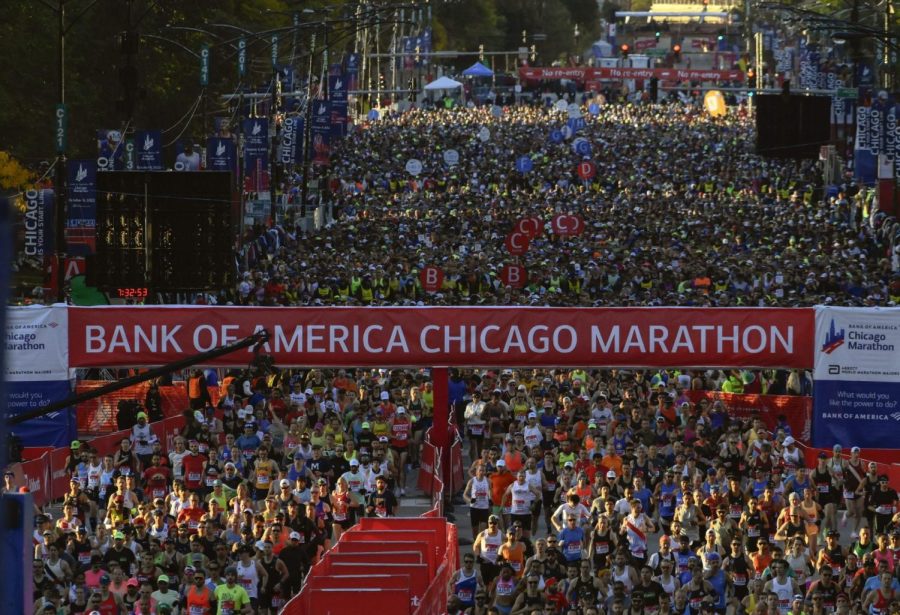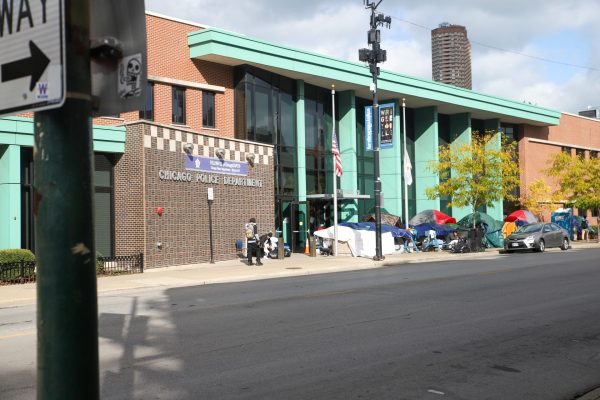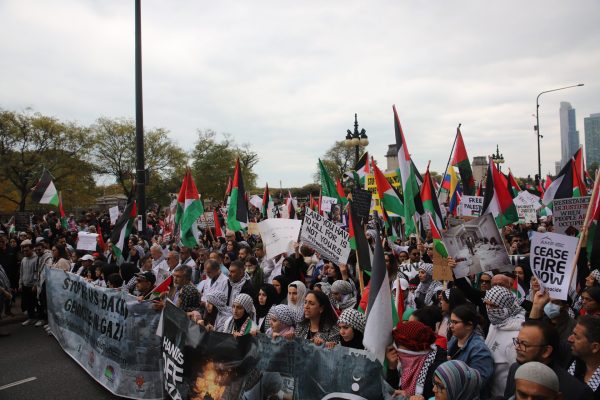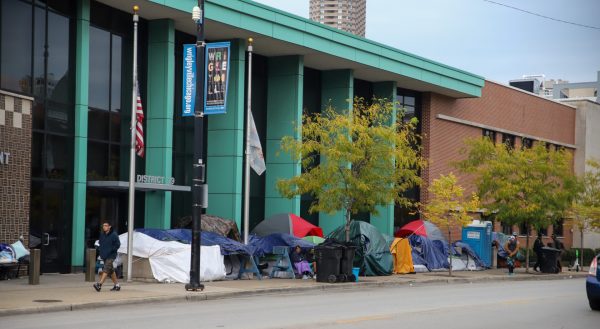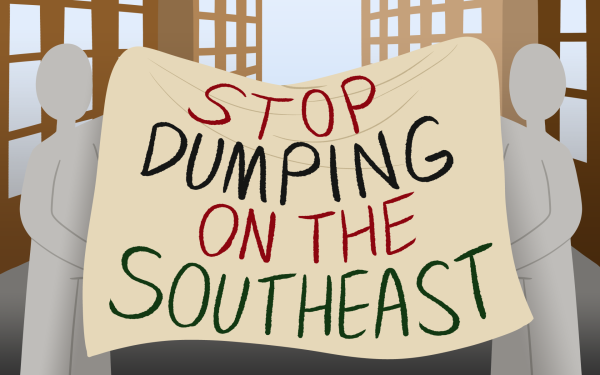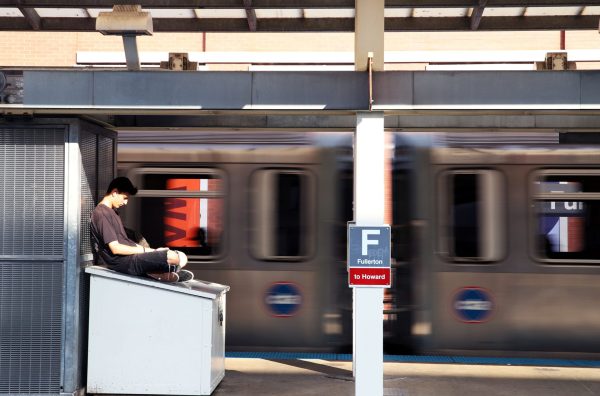Marathoners take on the Windy City
Runners start the Chicago Marathon, Sunday, Oct. 9, 2022, in Chicago.
Neon-colored laces and GPS watches captivated spectators as runners of all abilities crouched before the start line at Grant Park. Some participants held stoic expressions as though the 26.2 miles ahead of them was an old companion. Others bore determined stares as their chests moved rhythmically with their breathing.
Whatever differences separated runners in the 44th running of the Chicago Marathon, these differences mattered little as individuals took their first steps toward victory.
This year’s course starts and finishes at Grant Park, taking runners from the Loop to Sheridan before heading to the United Center and eventually to 35th street, where competitors take Michigan Avenue to the finish.
According to organizers, over 44,000 runners took to the street, featuring participants from all 50 states and over 100 countries.
The first racer to cross the line was para-athlete Marcel Hug, with a time of 1:25:20 in the men’s wheelchair race. This marks the Switzerland-native’s third Chicago Marathon title.
Not far behind was Oregon-native Susannah Scaroni, championing the women’s wheelchair race with a time of 1:45:48. This year’s race signifies Scaroni’s fourth appearance and first win.
Benson Kipruto dominated the men’s race, crossing the finish line in 2:04:24. The Kenyan athlete bested this previous victory at the Boston Marathon in 2021 by over five minutes.
Fellow Kenyan athlete Ruth Chepngetich defended her title with a time of 2:14:18, the second fastest time in the marathon’s history, only 14 seconds off from a world record.
Blank Bruno became the first winner of the nonbinary division with a time of 02:47:12, making Chicago the second major race to add this distinction.
DePaul senior and member of Delta Sigma Pi Jeannie Garlands expressed admiration for the coed fraternity’s yearly presence at the race.
“We’ve been [volunteering at the marathon] for many many years, it’s almost a tradition of ours. I joined my freshman year and I’ve been a community service officer for like two years now, so it’s my second time running it, but I think for four, five, or even six years [before Garland joined the fraternity] the chapter was participating in the marathon,” Garlands said.
Over 3,000 volunteers are required each year for the race to run smoothly. With over nine possible roles, from organizing the start and finish line to handing out water, volunteers are required to arrive between 4 and 6 a.m.
“It’s like a bonding moment for all of us, we all woke up at 5 a.m. last year, we were all delirious and it was like playing a video game, trying to hand water to runners as they were running by and it was just so much fun,” Garlands said.
When asked if she would ever make the switch from volunteer to runner, Garlands remained refreshingly honest.
“Absolutely not, no way, I am a volunteer for a reason, I tried to run a 5k when I was 10 and it was the worst experience of my life,” Garland said with a laugh.
Yet, others find themselves strewn along Michigan Avenue amid the blustery morning air in honor of those running the race.
“My girlfriend is running it for the first time, so I’m out here to support her,” said Jared, a Cincinnati native near mile marker No. 2 between State and Adams Street.
With over three waves of runners, the first beginning at 7:30 a.m. and the second and third following at 8 a.m. and 8:35 a.m., a nearly endless flow of participants streamed through the Loop.
“For me it’s almost like a vacation, but for [my girlfriend] it’s really exciting,” Jared said. “It’s been great to get to watch her interact with everything and prepare for the race.”
Yet, completing the 26.2 miles is more than a momentary victory for runners.
“I decided to run for a couple of reasons. I’ve been interested in running for a while with Covid-19 it was really good for my mental health to get out there and during college it just became a hobby,” said Sandra. “I just moved to Chicago and one of the things I love about Chicago was all the community and the way people came together, especially supporting the marathon.”
Since 2020, 28.76% of current runners took up the sport during the pandemic, with 72.78% of new runners citing physical health as motivation to lace up their sneakers.
As time inched closer for Sandra to embark on her first marathon, she expressed a mixture of emotions toward the monumental accomplishment.
“I’m feeling so many things, I don’t know, I think I’m excited, a little anxious, a little scared that I’ve never done the full 26 before. Training for four months leading up to it has been obviously very tough [mentally] and physically… but I’m excited that I’ve made it this far and it’s going to be an amazing experience,” Sandra said.
As the 44th marathon concludes and runners and para-athletes of both elite and ordinary roots cross the finish line, it is no surprise why the Chicago race is deemed one of the six world marathon majors.


